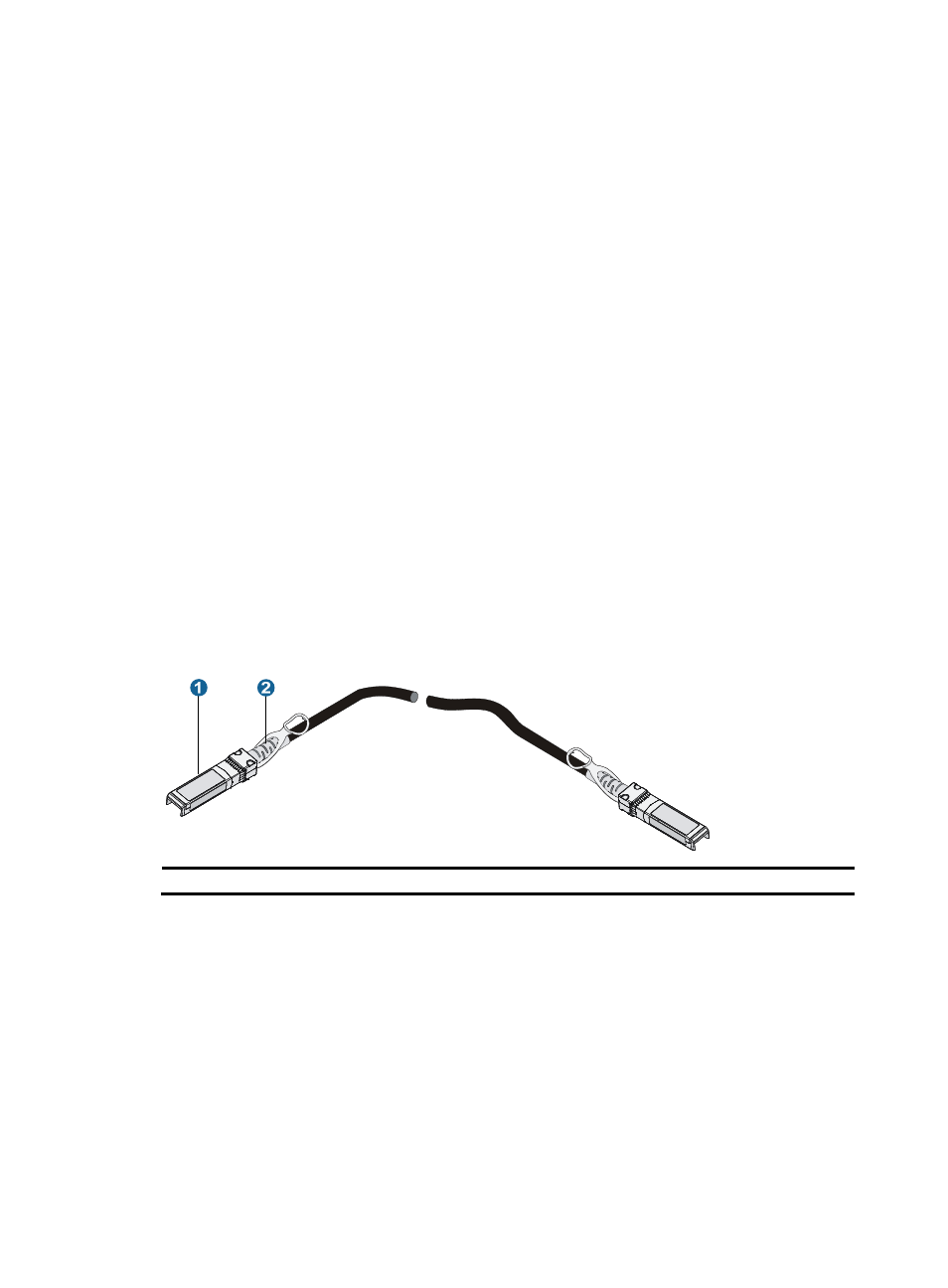Sfp+ cable, Qsfp+ cable – H3C Technologies H3C S10500 Series Switches User Manual
Page 101

93
•
The fiber ports on some cards have shielded covers. Remove the shielded covers before using the
fiber ports. Fiber interfaces must be installed with shielded covers when they are not in use. Keep
them safely.
•
Fiber connectors must be protected under safe and reliable outer packing, and be fitted with dust
caps. Fiber connectors must be installed with dust caps when they are not in use. Take care not to
scratch their end face. Replace the dust cap if it is loose or polluted.
•
Before connecting a fiber, use dust free paper and absolute alcohol to clean the end face of the
fiber connector. You can brush the end face only in one direction. You also need to brush the end
face of the fiber port.
•
Never bend or curve a fiber when connecting it. After a fiber is installed well, the bend radius must
be not less than 40 mm (the minimum dynamic bend radius is 20 D, and the minimum static bend
radius is 10 D. D indicates the outer diameter of dust caps).
•
If the fiber has to pass through a metallic board hole, the hole must have a sleek and fully filleted
surface (the filleting radius must be not less than 2 mm). When passing through a metallic board
hole or bending along the acute side of mechanical parts, the fiber must wear jackets or cushions.
•
Insert and remove a plug with care. Never exert a fierce force to the fiber or plug; otherwise the
plug might be damaged or the fiber might be broken. Never pull, press or extrude the fiber fiercely.
For the allowed maximum tensile load and crush load, see
.
SFP+ cable
You can use SFP+ cables to connect the SFP+ ports. The SFP+ cables available for the switch series are
10 G SFP+ Cu cables, as shown in
.
Figure 52 SFP+ cable
(1) Connector
(2) Pull latch
QSFP+ cable
You can use QSFP+ cables to connect the QSFP+ ports.
